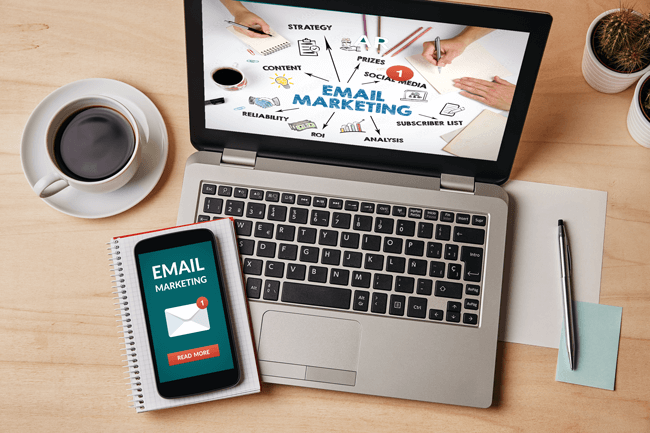Email Marketing for Small Businesses
 Email marketing is a powerful and cost-effective strategy that can help small businesses expand their customer base, drive sales, and maintain customer relationships. Unlike social media marketing, email marketing allows for direct communication with customers and provides a more personal and engaging experience. Whether you're just starting out or looking to enhance your current email campaigns, here's a comprehensive guide to make an email marketing strategy that works for your small business.
Email marketing is a powerful and cost-effective strategy that can help small businesses expand their customer base, drive sales, and maintain customer relationships. Unlike social media marketing, email marketing allows for direct communication with customers and provides a more personal and engaging experience. Whether you're just starting out or looking to enhance your current email campaigns, here's a comprehensive guide to make an email marketing strategy that works for your small business.
At its core, email marketing involves connecting directly with your customers through various types of email messages. While newsletters are commonly used to support marketing efforts and engage customers, there are other types of emails that can be equally effective:
- Newsletters - Keep customers engaged with your brand and provide valuable information.
- Promotional emails - Announce sales, coupons, and discount codes to drive sales.
- Reminders - Send "abandoned cart" emails to encourage customers to complete their purchases (primarily for e-commerce companies).
- Personalized emails - Make subscribers feel special and connected to your brand.
Email marketing goes beyond sending generic emails. It focuses on communication and building customer relationships.
Getting Started with Email Marketing
Developing an email marketing strategy may seem overwhelming, but it's simpler than you think. Many email marketing platforms offer user-friendly tools and templates tailored to small business owners. Below is a 10-step guide to get started.
1. Set goals - Define the purpose of your email marketing strategy and what you want to achieve, such as lead nurturing, building brand awareness, driving sales, or building customer relationships.
2. Choose an email marketing platform - Select an email service provider based on features, cost, and your specific business needs.
3. Build an email list – You can start by collecting customer emails and creating sign-up forms on your website, offering incentives like discounts or exclusive content to encourage subscriptions.
4. Segment your email list - Divide your audience into groups based on factors like purchase history and interests to create targeted, personalized emails.
5. Build email templates - Utilize email marketing platforms' templates to create professional-looking emails consistent with your brand. Ensure templates are optimized for mobile devices.
6. Write compelling subject lines - Craft engaging subject lines that grab readers' attention and entice them to open your emails. Experiment with A/B testing to determine the most effective styles.
7. Write compelling email content - Create engaging headlines, scannable content, and clear calls to action. Keep emails concise and make the desired action obvious.
8. Utilize email automation - Automate your email campaigns with triggers such as welcome emails for new subscribers or reminders for abandoned carts.
9. Monitor results - Use the analytics tools provided by email marketing platforms to measure open rates, conversion rates, click-through rates, and unsubscribes. Use this data to refine your strategy and create content aligned with subscribers' interests.
10. Maintain compliance and best practices - Familiarize yourself with spam laws and regulations, including an unsubscribe button in every email and allowing users to opt in or out of receiving emails.
At the very least, you need a provider to create email marketing templates and send messages through, an email list and your content. Some of the steps above you can learn as you go and become more adept to the way your chosen platform works.
Something that is important to remember is that every email that makes it to a customer mailbox is a representation of your business. Do your best to make a great impression by providing visually appealing, engaging content your customers may find useful and your email marketing strategy is guaranteed to be a success.
*Disclaimer*: Harvard Business Services, Inc. is neither a law firm nor an accounting firm and, even in cases where the author is an attorney, or a tax professional, nothing in this article constitutes legal or tax advice. This article provides general commentary on, and analysis of, the subject addressed. We strongly advise that you consult an attorney or tax professional to receive legal or tax guidance tailored to your specific circumstances. Any action taken or not taken based on this article is at your own risk. If an article cites or provides a link to third-party sources or websites, Harvard Business Services, Inc. is not responsible for and makes no representations regarding such source’s content or accuracy. Opinions expressed in this article do not necessarily reflect those of Harvard Business Services, Inc.
